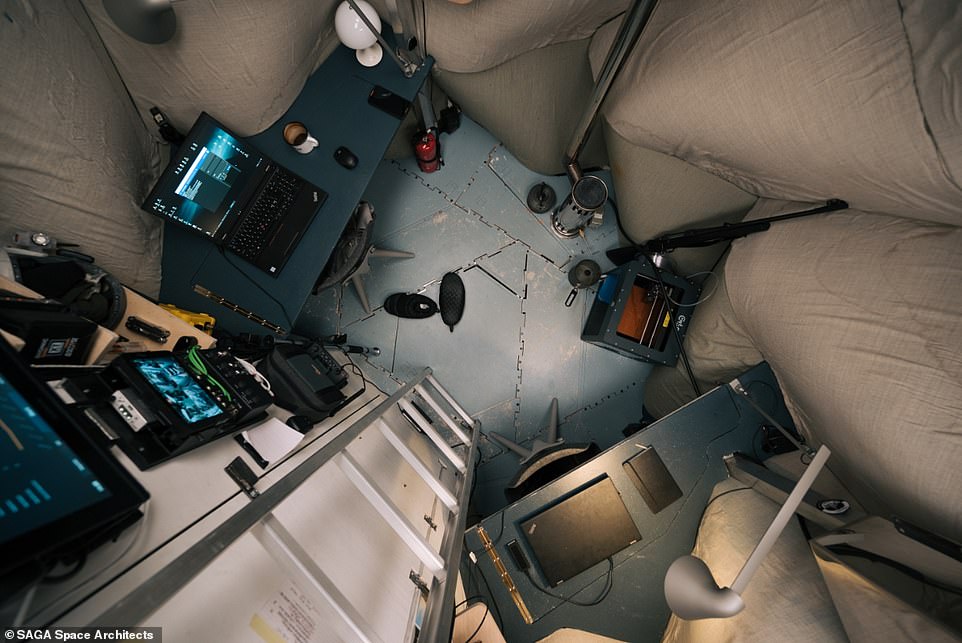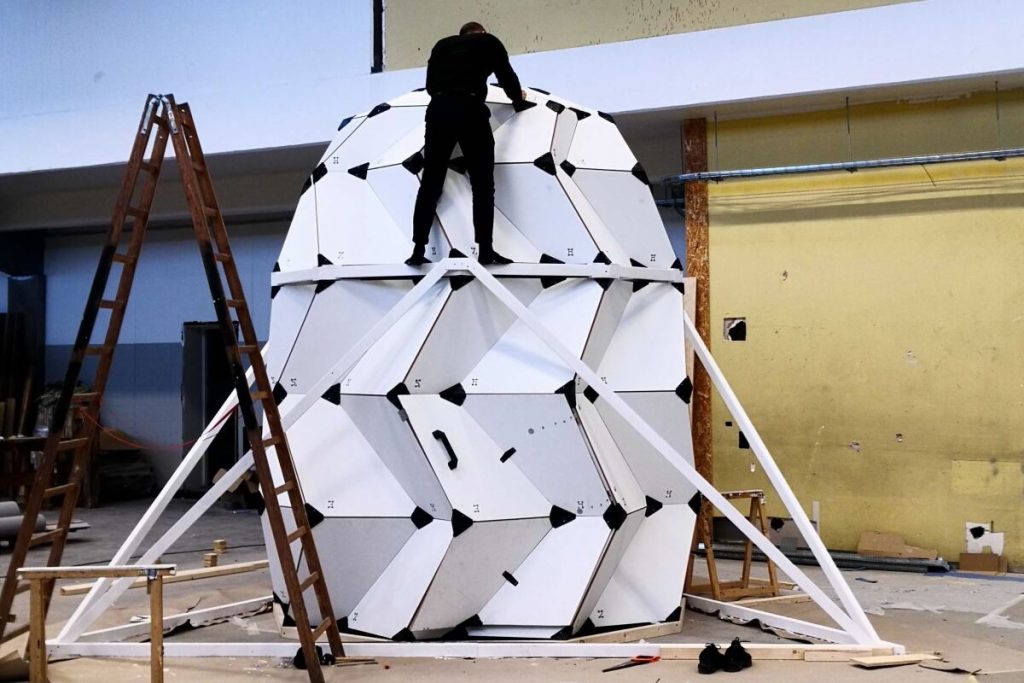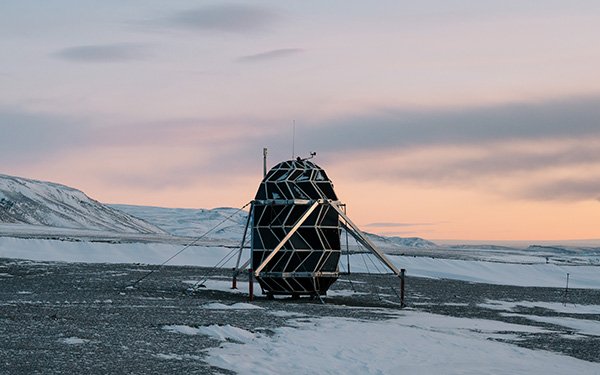‘Space Architects’ Sebastian Aristotelis and Karl-Johan Sorensen are two Danish designers from SAGA who designed the origami-inspired foldable lunar shelter for the off-world explorers of NASA’s Artemis lunar mission.
The project is called “Lunark Habitat,” It is a small portable structure that can be easily folded for transport. Its exterior is made of a strong aluminum frame covered in solar cells. Its interior includes a toilet and living quarters with work desks, a heater, workout equipment, sleeping pods, and even light panels that can simulate daylight for you.

Scientists’ goal for future space explorations is to send people who will survive and thrive in harsh environments. So they must ensure the safety of the explorers. This means that the structure should take into account how people will cope with the challenges of living alone. The system of care packages for astronauts aboard the International Space Station is one psychological booster currently in use.
SAGA habitat is designed for people who want to travel but do not get trained for a survivor mission. LUNARK is their home away from home.

The Lunark Habitat, which can withstand the freezing temperatures of the Arctic, is also designed to meet the goals of a greener environment, with solar panels powering the structure. In addition, since the habitat is 3D printed, any parts that need to be replaced can be quickly reprinted.

Its design is inspired by Japanese origami, which folds down to about 100 cubic feet and expands using an intricate fold system. The structure weighs about 1,700 kilograms and can expand from 2.8 cubic meters to 17 cubic meters.
The real innovation of the Lunark Habitat is that it is designed to accommodate the psychological needs of the inhabitants, which addresses the major challenge of staying in space for an extended time. It includes a weather simulator and a system that mimics the body’s natural circadian rhythms to alleviate the monotony of doing the same tasks and looking at the same environment every day.

Furthermore, the structure includes a carbon fiber shell that is lightweight and arranged in an origami format, allowing the shell to expand to 750 times its original size. SAGA used white composite rubber to add flexibility to the structure in addition to carbon fiber. An external aluminum frame supports the load.
The structure is smaller than a rocket, and the folded Lunark can easily fit inside a shipping container. More importantly, Lunark can be easily unfolded and assembled without any special skills or tools, making it ideal for space tourists. “We are civilians, and if we are looking at a future with more civilians in space, that is one of the most important things for us as architects to figure out,” Aristotelis says.
If only scientists could start figuring out a cost-effective way to send tourists to space, life would be great!


